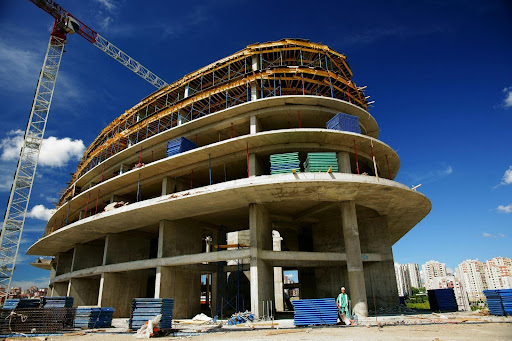Coastal communities face unique challenges when it comes to protecting infrastructure and residents from the destructive forces of hurricanes and severe weather events.
In recent years, advancements in building materials and storm preparedness strategies have played a crucial role in strengthening resilience and reducing the impact of these natural disasters.
In this article, we’ll explore the latest innovations in construction materials and hurricane preparedness and their role in protecting coastal communities.
1. Resilient Construction Materials for Coastal Construction
The choice of construction materials is critical in ensuring the resilience of structures in coastal areas prone to hurricanes and severe weather.
Recent advancements in material have focused on durability, strength, and resistance to wind, water, and impact damage. Here are some notable innovations:
High-Performance Concrete:
High-performance concrete is engineered to withstand higher levels of stress and strain compared to traditional concrete. It offers enhanced durability, strength, and resistance to water penetration, making it an ideal choice for coastal construction projects.
Fiber-Reinforced Polymers (FRPs):
Fiber-reinforced polymers, such as fiberglass and carbon fiber, offer excellent strength-to-weight ratios and corrosion resistance, making them ideal for reinforcing concrete structures, bridges, and seawalls in coastal areas.
Impact-Resistant Windows and Doors:
Impact-resistant windows and doors are designed to withstand the high winds and flying debris associated with hurricanes and severe storms.
These windows and doors are constructed with laminated glass and reinforced frames to provide protection against windborne debris and water infiltration.
Composite Materials:
Composite materials for building, such as fiber cement siding, vinyl decking, and composite roof shingles, offer the look and feel of traditional materials with enhanced durability and resistance to moisture, rot, and insect damage.
2. Hurricane Preparation and Mitigation Strategies
In addition to using resilient construction materials, effective hurricane preparation and mitigation strategies are essential for protecting coastal communities from the destructive forces of hurricanes and severe weather. Here are some key strategies:
Early Warning Systems:
Early warning systems provide crucial information about approaching hurricanes, allowing residents and businesses in coastal areas to prepare and evacuate if necessary.
These systems rely on meteorological data, satellite imagery, and computer modeling to track and predict the path and intensity of hurricanes.
Building Codes and Regulations:
Strong building codes and regulations play a vital role in ensuring that structures in coastal areas are designed and constructed to withstand hurricane-force winds and storm surge.
Building codes may include requirements for wind-resistant roofing, impact-resistant windows, and elevated foundations to minimize flood damage.
Storm Surge Barriers and Flood Control Systems:
Storm surge barriers and flood control systems, such as seawalls, levees, and flood gates, are designed to protect coastal communities from flooding during hurricanes and severe storms.
These infrastructure projects help reduce the risk of property damage, loss of life, and economic disruption.
Community Preparedness and Education:
Community preparedness and education programs raise awareness about hurricane risks and provide information about evacuation routes, emergency shelters, and disaster preparedness kits.
These programs help residents and businesses in coastal areas take proactive measures to protect themselves and their property during hurricanes and severe weather events.
Conclusion
The latest innovations in construction materials and storm preparedness are helping to strengthen the resilience of coastal communities and reduce the impact of hurricanes and severe weather events.
By using resilient construction materials, implementing effective preparedness and mitigation strategies, and investing in critical infrastructure, coastal communities can better protect lives, property, and natural resources in the face of increasingly frequent and intense hurricanes.



